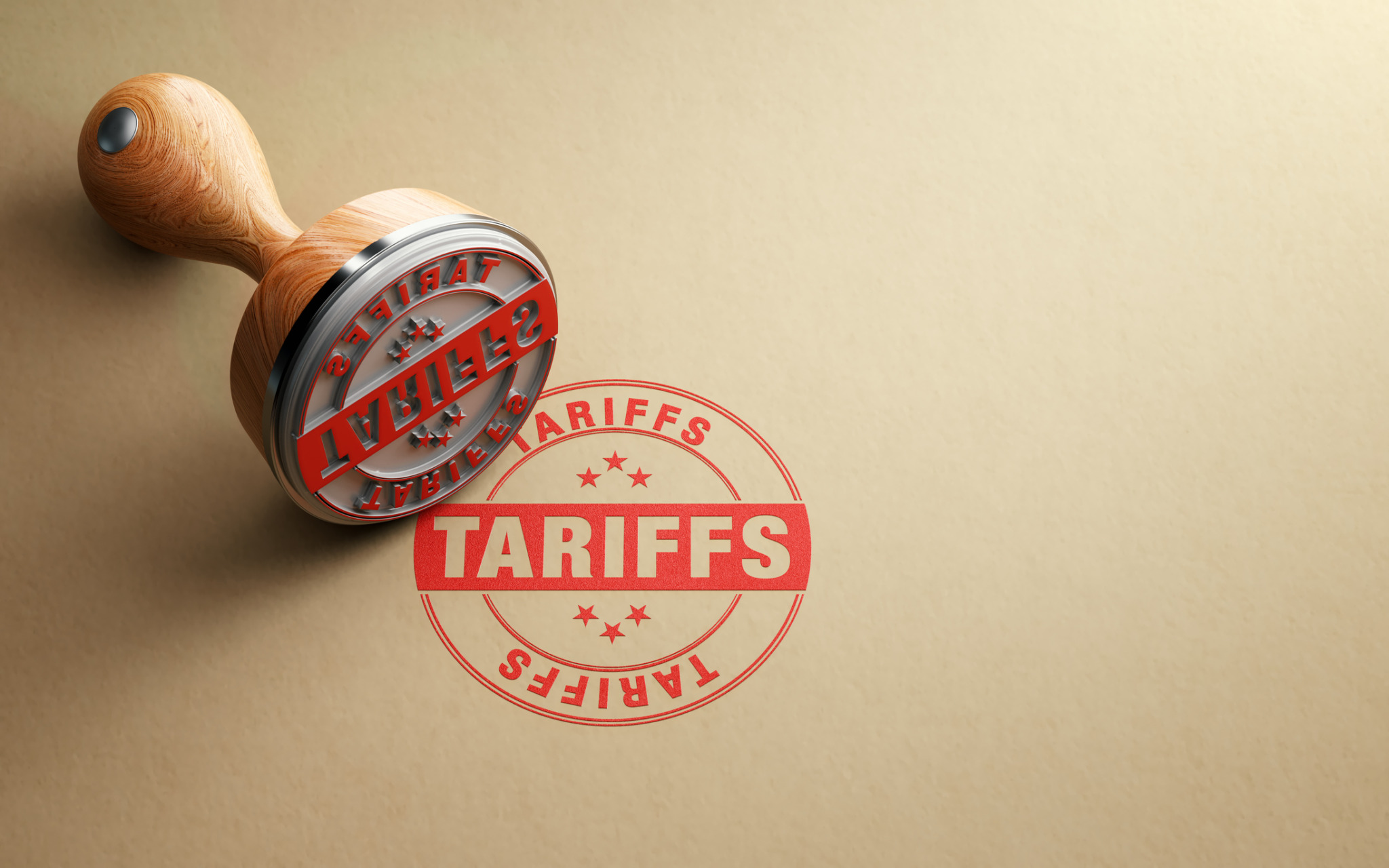Booming US-China Trade: Navigating The Path To A Trade Truce

Table of Contents
Understanding the Current State of US-China Trade Relations
The US-China trade relationship has a long and complex history, characterized by periods of intense cooperation and bitter conflict. Early phases were marked by China's integration into the global economy and significant growth in bilateral trade. However, this growth has not been without friction. The current trade volume is staggering, with hundreds of billions of dollars exchanged annually, profoundly impacting both economies. This scale means even minor disruptions can have far-reaching consequences.
- Key export and import categories: The US primarily exports agricultural products, aircraft, and semiconductors to China, while China's exports to the US include electronics, apparel, and machinery.
- Major industries affected by trade disputes: The tech sector, agricultural industry, and manufacturing have been particularly impacted, facing tariffs, supply chain disruptions, and investment uncertainty.
- Current trade imbalances and their consequences: A persistent trade deficit for the US has fueled concerns about job losses and economic vulnerability, leading to protectionist measures and retaliatory tariffs.
The Major Hurdles to a US-China Trade Truce
Achieving a lasting US-China trade truce faces significant obstacles. Deep-seated political and economic factors fuel the ongoing tensions.
- Intellectual Property Rights (IPR): Concerns over China's enforcement of IPR protections remain a major point of contention, affecting numerous US businesses.
- Technology Transfer: Forced technology transfer demands from Chinese companies continue to be a major source of friction.
- Market Access: Difficulties for US businesses in accessing the Chinese market, particularly in certain sectors, fuel resentment and hamper trade liberalization.
- National Security Concerns: Growing anxieties about technological dominance and national security have heightened tensions, leading to restrictions and limitations on trade in sensitive technologies.
Specific examples include disputes over steel and aluminum tariffs, retaliatory measures on agricultural products, and restrictions on technology exports, each contributing to a climate of mistrust and hindering the path to a truce. Domestic political pressures in both countries – the need for politicians to demonstrate strength on trade issues – also play a significant role in the stalemate. The influence of international organizations, such as the World Trade Organization (WTO), is also a factor, though their capacity to mediate effectively remains a point of debate.
Potential Pathways to a Trade Truce: Strategies and Negotiations
Finding a path towards a US-China trade truce requires a multifaceted approach encompassing several strategies and carefully negotiated agreements.
- Phased Agreements: Implementing phased agreements, starting with areas of mutual agreement and gradually expanding scope, can build trust and momentum.
- Tariff Reductions: Gradual reductions in tariffs, potentially linked to progress on other issues, can stimulate trade and foster economic cooperation.
- Dispute Resolution Mechanisms: Establishing clear and effective mechanisms for resolving future trade disputes can prevent escalation and promote a more predictable trading environment.
The roles of various stakeholders are crucial. Governments must demonstrate political will to compromise. Businesses need to advocate for a stable trading environment. International bodies can play a facilitating role, offering expertise and mediating disputes. Ultimately, a successful US-China trade truce hinges on both sides recognizing the mutual benefits of cooperation and compromise. Learning from successful trade negotiations between other nations, such as the EU and Canada, can provide valuable insights into crafting effective agreements. Strategies that focus on building trust, improving communication, and fostering mutual understanding are essential components of any successful negotiation.
The Economic Implications of a US-China Trade Truce (or Lack Thereof)
The economic implications of a US-China trade truce, or the continued absence of one, are far-reaching.
- Potential job creation and economic growth: A truce could unlock significant economic benefits, leading to increased trade, job creation, and economic growth in both countries.
- Reduced consumer prices and increased purchasing power: Reduced tariffs would lower consumer prices, increasing purchasing power and stimulating demand.
- Improved global supply chain stability: A stable trade relationship would contribute to more resilient and efficient global supply chains, benefiting businesses and consumers worldwide.
Conversely, the continuation of trade disputes and escalation would have severe negative consequences. Businesses would face continued uncertainty, supply chains would remain disrupted, and consumers would shoulder the burden of higher prices. Investors would be hesitant, hindering long-term investment and economic growth. The global economy, already facing challenges, would suffer further instability.
Conclusion: Securing a Future of Stable US-China Trade
Achieving a lasting US-China trade truce requires addressing significant political and economic hurdles. However, the potential benefits—increased trade, economic growth, and global stability—make the pursuit of such a truce imperative. Finding a mutually beneficial agreement demands compromise, effective negotiation, and a commitment to fostering a more cooperative relationship. Understanding the nuances of US-China trade is crucial to securing a lasting truce. Stay informed and engage in the conversation to promote stable and prosperous trade relations between these two economic giants. The future of global economic stability hinges on it.

Featured Posts
-
 Apples Stock Performance A Post Trump Tariff Assessment
May 24, 2025
Apples Stock Performance A Post Trump Tariff Assessment
May 24, 2025 -
 Riviera Blue Porsche 911 S T Exceptional Condition Now Available
May 24, 2025
Riviera Blue Porsche 911 S T Exceptional Condition Now Available
May 24, 2025 -
 Confirmed Olivia Rodrigo And The 1975 To Play Glastonbury 2025
May 24, 2025
Confirmed Olivia Rodrigo And The 1975 To Play Glastonbury 2025
May 24, 2025 -
 Nrw Haftstrafen Nach Aufdeckung Von Grossangelegter Notenmanipulation An Universitaeten
May 24, 2025
Nrw Haftstrafen Nach Aufdeckung Von Grossangelegter Notenmanipulation An Universitaeten
May 24, 2025 -
 Are Museum Programs In Jeopardy After Trumps Funding Reductions
May 24, 2025
Are Museum Programs In Jeopardy After Trumps Funding Reductions
May 24, 2025
Latest Posts
-
 Tu Horoscopo De La Semana Del 4 Al 10 De Marzo De 2025
May 24, 2025
Tu Horoscopo De La Semana Del 4 Al 10 De Marzo De 2025
May 24, 2025 -
 Calkantili Ve Sadik Erkek Burclari Babalik Perspektifi
May 24, 2025
Calkantili Ve Sadik Erkek Burclari Babalik Perspektifi
May 24, 2025 -
 Predicciones Astrologicas Horoscopo Semanal 4 10 Marzo 2025
May 24, 2025
Predicciones Astrologicas Horoscopo Semanal 4 10 Marzo 2025
May 24, 2025 -
 Guevenilir Erkek Burclari Babalik Rollerinde Basari Ve Zorluklar
May 24, 2025
Guevenilir Erkek Burclari Babalik Rollerinde Basari Ve Zorluklar
May 24, 2025 -
 Horoscopo Del 4 Al 10 De Marzo De 2025 Descubre Tu Pronostico Astral
May 24, 2025
Horoscopo Del 4 Al 10 De Marzo De 2025 Descubre Tu Pronostico Astral
May 24, 2025
